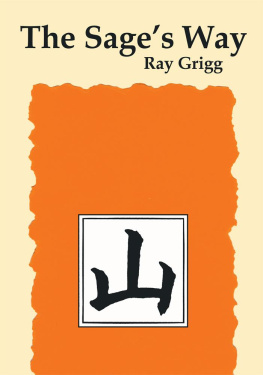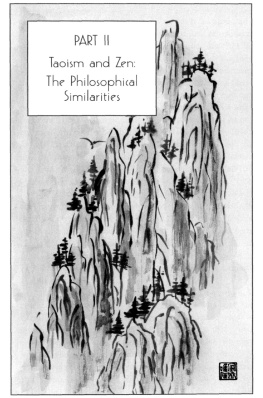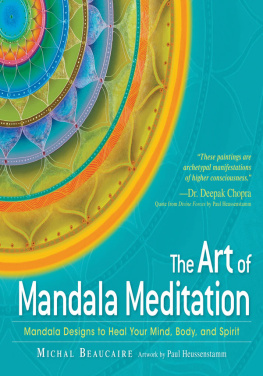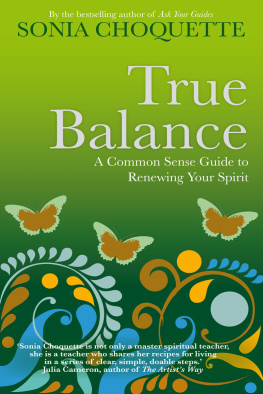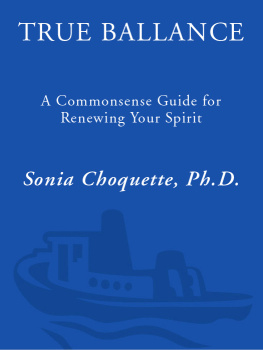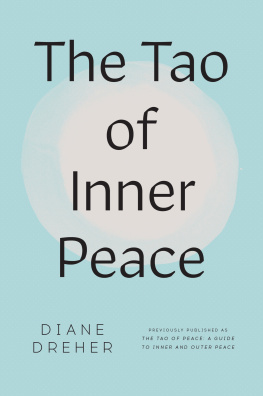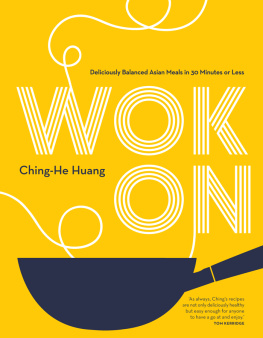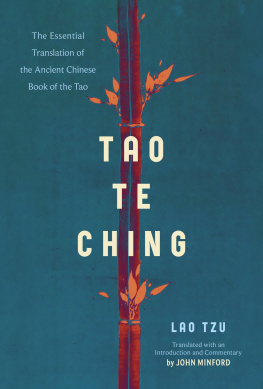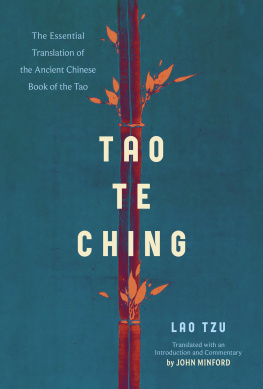Ray Grigg - The Tao of Being: A Think and Do Workbook
Here you can read online Ray Grigg - The Tao of Being: A Think and Do Workbook full text of the book (entire story) in english for free. Download pdf and epub, get meaning, cover and reviews about this ebook. year: 2014, publisher: GreenDragonBooks, genre: Religion. Description of the work, (preface) as well as reviews are available. Best literature library LitArk.com created for fans of good reading and offers a wide selection of genres:
Romance novel
Science fiction
Adventure
Detective
Science
History
Home and family
Prose
Art
Politics
Computer
Non-fiction
Religion
Business
Children
Humor
Choose a favorite category and find really read worthwhile books. Enjoy immersion in the world of imagination, feel the emotions of the characters or learn something new for yourself, make an fascinating discovery.

The Tao of Being: A Think and Do Workbook: summary, description and annotation
We offer to read an annotation, description, summary or preface (depends on what the author of the book "The Tao of Being: A Think and Do Workbook" wrote himself). If you haven't found the necessary information about the book — write in the comments, we will try to find it.
The Tao of Being: A Think and Do Workbook — read online for free the complete book (whole text) full work
Below is the text of the book, divided by pages. System saving the place of the last page read, allows you to conveniently read the book "The Tao of Being: A Think and Do Workbook" online for free, without having to search again every time where you left off. Put a bookmark, and you can go to the page where you finished reading at any time.
Font size:
Interval:
Bookmark:
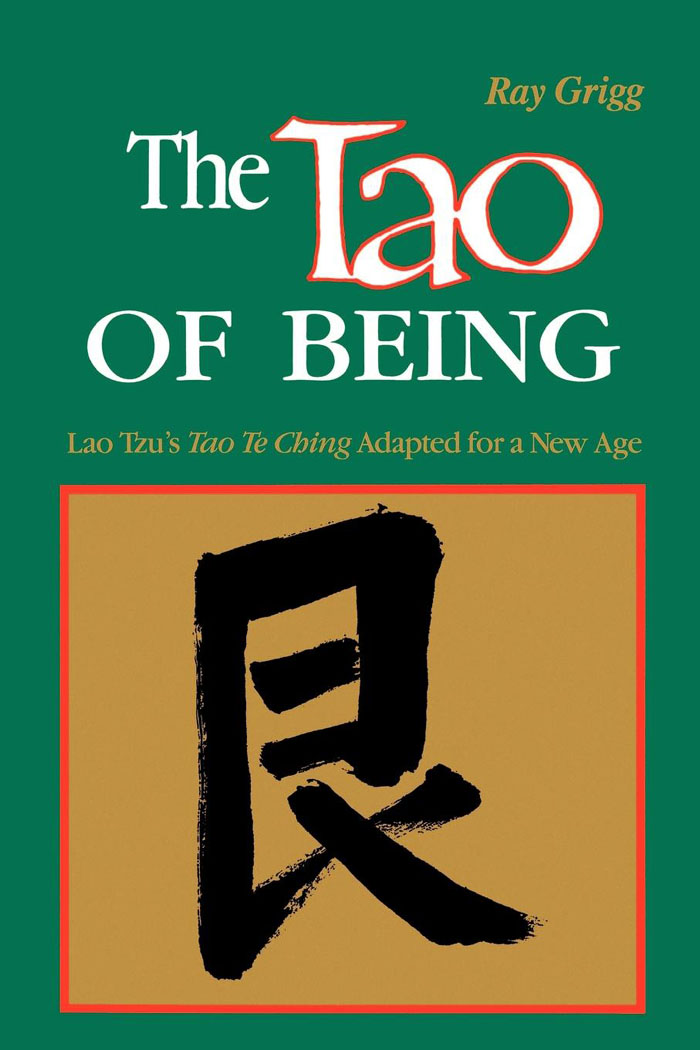
The Tao of Being

A Think and Do Workbook
Ray Grigg


Copyright 1989 by Humanics New Age
Humanics New Age is an imprint of Humanics Publishing Group.
All rights reserved.
No part of this book may be reproduced by any means, nor transmitted, nor translated into a machine language, without written permission from Humanics Limited.
Second Printing 1990
PRINTED IN THE UNITED STATES OF AMERICA
Library of Congress Cataloging-in Publication Data
Grigg, Ray, 1938
The Tao of Being: a think and do workbook/Ray Grigg.
p. cm.
Bibliography: p.
ISBN 0-89334-115-0
1. Spiritual life (Taoism) I. Title
BL 1923. G7 1988
299. 51482--dc19 | 88-12885 |
To my mother and father
I offer particular gratitude to the following authors whose published works I have used as reference sources: Gia-Fu Feng and Jane English (Lao Tzu: Tao Te Ching and Chuang Tzu: Inner Chapters), R.L. Wing (The Tao of Power), Arthur Waley (The Way and Its Power), Lin Yutang (The Wisdom of Laotze), Dr. John C.H. Wu (Lao Tzu: Tao Te Ching), Alan Watts with the collaboration of Al Chung-liang Huang (Tao: The Watercourse Way), Thomas Merton (The Way of Chuang Tzu), Holmes Welch (Taoism: The Parting of the Way), Benjamin Hoff (The Tao of Pooh).
THE TAO OF BEING: A Think and Do Workbook is for everyone who knows they dont know. It is a workbook that cannot be completed. Unlike the Think and Do of primary school years, this book has questions that cannot be answered and answers that cannot be given. We must each correct it ourselves.
It was inspired by Lao Tzus Tao Te Ching, written in China about the Sixth Century B.C. Several translations have been used to provide a large range of interpretations from which to respond with a maximum of creative freedom. The number of chapters, eighty-one, is the same as the Tao Te Ching to maintain a parallel. THE TAO OF BEING: A Think and Do Workbook, however, is not a translation of the Tao Te Ching but an application of its spirit to thinking and doing.
This workbook is offered with a humility that is ever mindful of the masterfulness of Lao Tzu. The original Tao Te Ching, as all translations attest, is an incredibly rich and subtle creation that keeps escaping a definitive interpretation. The mark of a masterpiece is its essential quality of expansion; for twenty-five hundred years the Tao Te Ching has continued to manifest itself widely in the arts, in philosophy, and as a guide in the common challenge of everyday living. It continues to elude the confinement of definitive word and understanding.
The enigmatic nature of the Tao Te Ching is due fundamentally to Lao Tzus realization that we make sense of living by entering it directly, not by trying to understand it as detached observers. We cannot escape ourselves. To use a Zen metaphor, the sword cannot cut itself. Neither can we make sense of living through a haze of intellectual constructs; living is larger and more elusive than the systems we invent to explain it. So we never quite understand ourselves and the universe in which we live. The Tao is the freedom that comes with not-understanding.
The task of this workbook is to move into this freedom by untangling the restraints that prevent the Taoist thinking and doing from happening. We are, after all, that freedom. The Tao cannot be understood because we are it. This same principle later becomes an essential part of Zen.
The historical and evolutionary connection between Taoism and Zen is close and important. Although the style of this workbook is primarily Taoist, the two ways can be used interchangeably just as they were in Chan, Zens early form in China.
Although Zen is presently identified with Japan and Buddhism, its early existence in China as Chan adopted three of the essential ingredients of Taoism: the intuitive, nonverbal and antidogmatic qualities of Taoism; the Taoistss deep regard for nature as a teacher and as the primary process by which things can be understood; the principle of non-doing (wu-wei) or doing without doing (wei-wu-wei) of which Chuang Tzu writes in Taoism.
When Chan Buddhism came to Japan in the late twelfth century, it was well mixed with essential Taoist principles. To become Zen in Japan, Chan blended with the native Shinto tradition, acquiring a sharpened sense of nature from Shintos spirit in things (kami) and an encouragement for direct sensory contact with nature. Shinto also reinforced in Zen Lao Tzus original admonition that our way of thinking and doing not be confined by conceptualizations and words.
We are not to understand thinking and doing, as the form of spoken and written language suggests we should, as a one-thing-at-a-time string of awarenesses but as a multi-dimensional experience that is not writing about apples but walking in an orchard and eating them.
Anyone who thoughtfully uses language should realize that words are not a replication of experience but a representation. Language does not replicate experience although it may replicate what is thought to have been experience, which is quite another thing. Words always create vicariousness. The task in this workbook is to empty of words rather than to fill with them, to move out of a clarity of apparent certainty into a profound uncertainty and receptivity. We approach the Tao by untying the concepts imposed by language, by finding the direction of direct experience, by getting the joke rather than the explanation of the joke. Explanations are never funny until they themselves become the joke.
It slowly becomes obvious when reading Lao Tzu that his essential subject lies between words, in the empty spaces that separate one thought from another. Some passages of the Tao Te Ching clearly follow a line of thought and make logical sense but often the arrangement and interplay of these comprehensible thoughts create leaps of insight that escape explanation. Apparently simple ideas, when juxtaposed, recreate the contradictions that are an inherent part of living. Paradoxes are natural. Lao Tzu is not so much explaining how things work as he is recreating for us a sense of them by confounding our habits of understanding and then emptying us of the intellectual constructs that prevent us from seeing the way things are.
The English equivalents represented by the Chinese ideograms Tao, Te and Ching literally mean the way the universe works, virtue/power and classic/book. The writing style is telegraphic and the problems of interpreting and transposing the thoughts into English are considerable. This difficulty pervades the approximately five thousand ideograms that constitute the Tao Te Ching and so translations vary greatly. In THE TAO OF BEING: A Think and Do Workbook, the telegraphic style is deliberately replicated in order that leaps of connection be left to the reader. Learning to make these leaps is crucial to the thinking style to be engendered by this workbook.
The eighty-one chapters are numbered and titled only for the convenience of finding them. They follow no particular order. Within any one chapter the association from one thought to another does not always flow in a simple linear way. The particular style of Lao Tzus writing has been replicated to recreate the special effect of this way of thinking. Thoughts that are apparently unrelated leap to the next very much like the images in haiku. In many cases the significance of a chapter is not in the thoughts themselves but in the interconnective spaces between them. Thinking connections rather that thoughts is crucial in this workbook.
Font size:
Interval:
Bookmark:
Similar books «The Tao of Being: A Think and Do Workbook»
Look at similar books to The Tao of Being: A Think and Do Workbook. We have selected literature similar in name and meaning in the hope of providing readers with more options to find new, interesting, not yet read works.
Discussion, reviews of the book The Tao of Being: A Think and Do Workbook and just readers' own opinions. Leave your comments, write what you think about the work, its meaning or the main characters. Specify what exactly you liked and what you didn't like, and why you think so.

